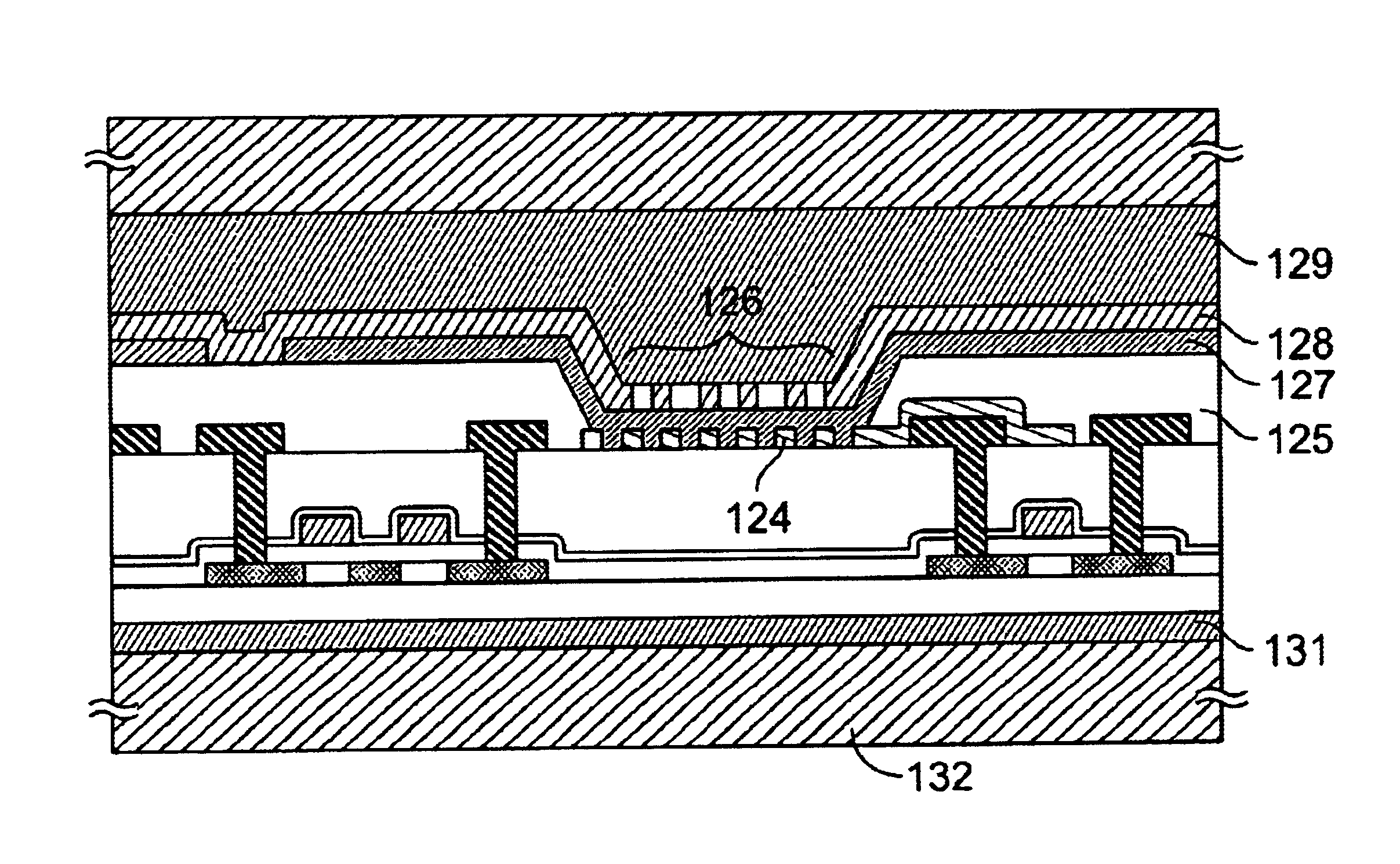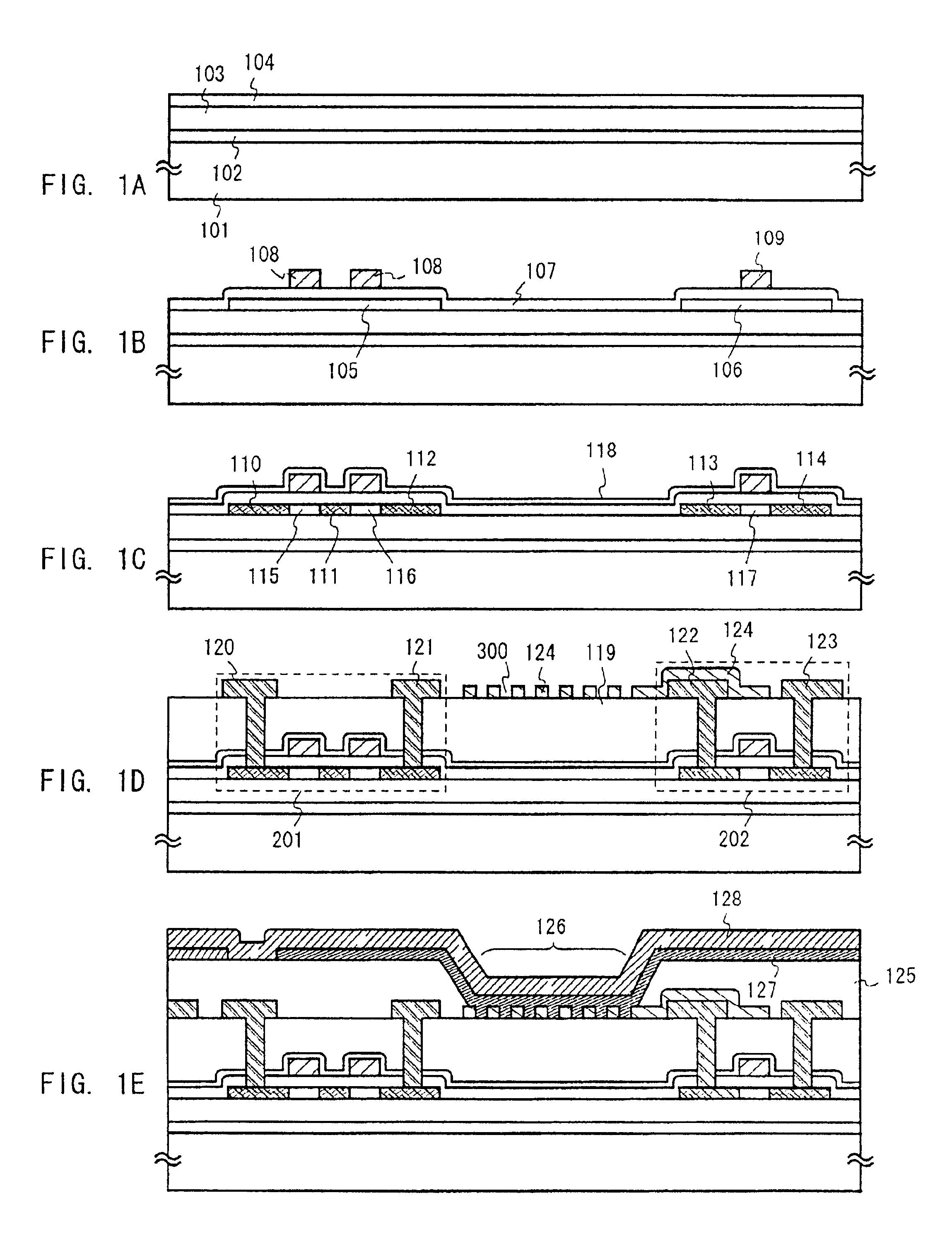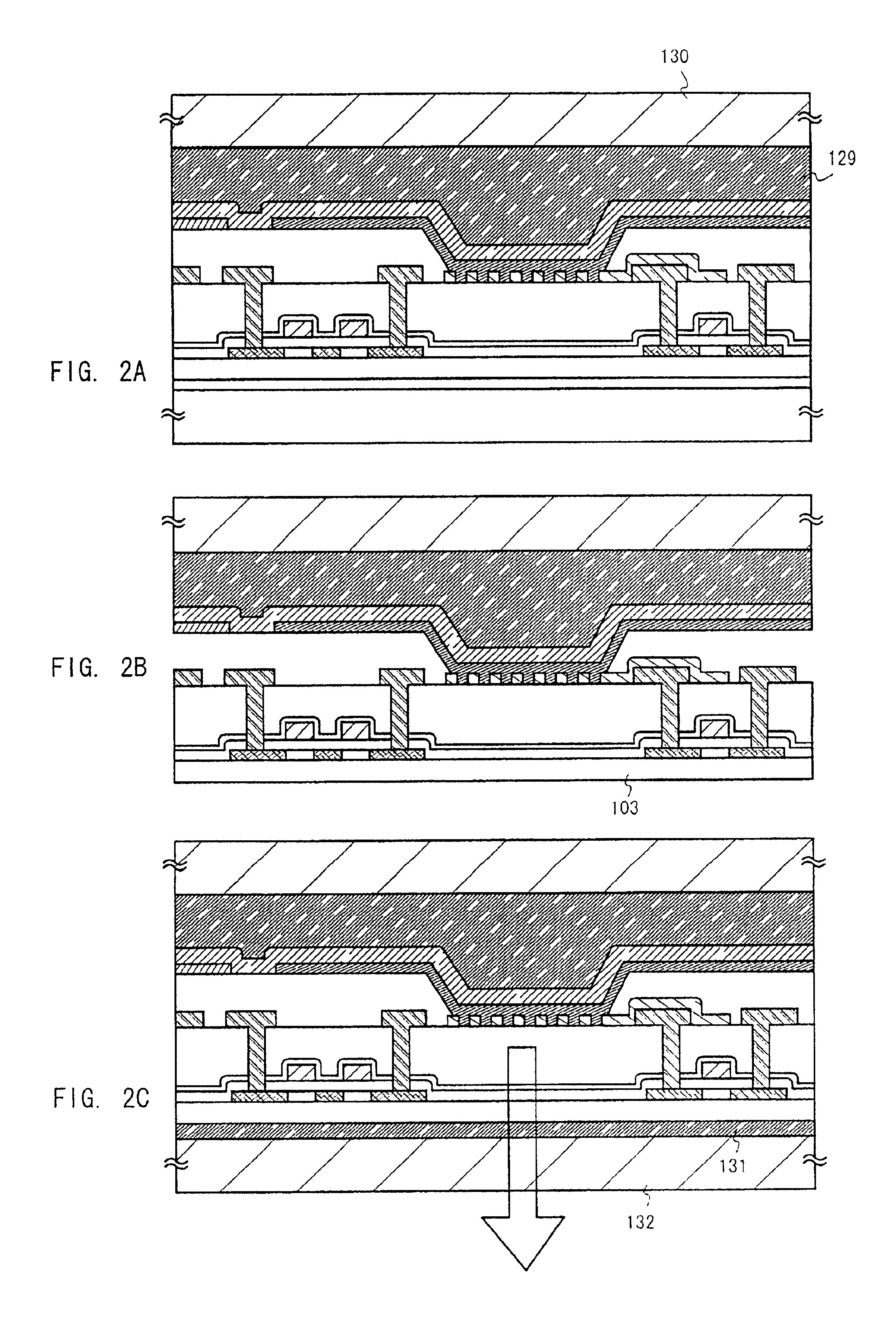Light emitting device and manufacturing method thereof
a technology of light emitting devices and manufacturing methods, applied in the direction of discharge tubes/lamp details, discharge tubes luminescnet screens, organic semiconductor devices, etc., can solve the problems of poor electric current injection efficiency, low efficiency of conductive oxide films, and slow response of elements, so as to increase the breadth of selectable materials capable of being used as anodes, the effect of high electric current injection efficiency and superior responsibility
- Summary
- Abstract
- Description
- Claims
- Application Information
AI Technical Summary
Benefits of technology
Problems solved by technology
Method used
Image
Examples
embodiment 1
[Embodiment 1]
[0068]A light emitting device having a pixel portion with a structure differing from that of FIGS. 1A to 3B is explained in Embodiment 1. FIGS. 5A to 5C, and FIG. 6 are used in the explanation.
[0069]Processing is first performed in accordance with the manufacturing steps of FIG. 1 up through FIG. 1D. However, a slit is not formed in a pixel electrode 501 in Embodiment 1. Further, platinum is used as a material for forming the pixel electrode 501 in Embodiment 1. (See FIG. 5A.)
[0070]The second interlayer insulating film 125 is formed next, as explained in the embodiment mode of the present invention, and the opening portion 126 is formed, and an organic EL layer 502 is formed. The EL layer 502 may be formed in accordance with the embodiment mode. Further, a cathode 503 is formed on the EL layer 502. An aluminum film to which lithium has been added is used as the cathode 503 in Embodiment 1. Note that evaporation is used for the film formation of the cathode 503, and tha...
embodiment 2
[Embodiment 2]
[0075]In Embodiment 2, formation of a DLC (diamond-like carbon) film in one or both surfaces of the fixing substrate and / or the joining substrate is effective. However, the transitivity drops if the film thickness is too thick, and therefore the film thickness may be set equal to or less than 50 nm (preferably between 10 and 20 nm).
[0076]The DLC film has a Raman spectral distribution with an asymmetric peak at approximately 1550 cm−1, and a shoulder at approximately 1300 cm−1. Further, it shows a hardness of 15 to 25 Pa when measured using a microhardness meter.
[0077]The DLC film has a larger hardness compared to a plastic substrate, and has a larger thermal conductivity, and is therefore effective when formed as a protecting film for surface protection and thermal diffusion.
[0078]It is therefore possible to form the DLC film in advance before joining the plastic substrate, or to form the DLC film after joining the plastic substrate. Whichever structure is used, the DL...
embodiment 3
[Embodiment 3]
[0079]An EL light emitting device of the present invention can be given with a pixel portion having the circuit configuration shown in FIG. 7. In FIG. 7, reference numeral 701 denotes a source wiring, reference numeral 702 denotes a gate wiring, 703 denotes a switching TFT, 704 denotes a current control TFT, 705 denotes a current supply line, and reference numeral 706 denotes an EL element. The switching TFT 703 and the current control TFT 704 are manufactured by p-channel TFTs in Embodiment 3. One of the switching TFT 703 and the current control TFT 704 may be an n-channel TFT, of course, and both may also be n-channel TFTs.
[0080]Note that the same role as the capacitor 301 of FIGS. 3A and 3B is supplemented by a gate capacitor of the current control TFT 704. This is because one frame period (or one field period) is short when performing time-division gray-scale display in accordance with digital drive so that an electric charge can be maintained by only the gate capa...
PUM
 Login to View More
Login to View More Abstract
Description
Claims
Application Information
 Login to View More
Login to View More - R&D
- Intellectual Property
- Life Sciences
- Materials
- Tech Scout
- Unparalleled Data Quality
- Higher Quality Content
- 60% Fewer Hallucinations
Browse by: Latest US Patents, China's latest patents, Technical Efficacy Thesaurus, Application Domain, Technology Topic, Popular Technical Reports.
© 2025 PatSnap. All rights reserved.Legal|Privacy policy|Modern Slavery Act Transparency Statement|Sitemap|About US| Contact US: help@patsnap.com



